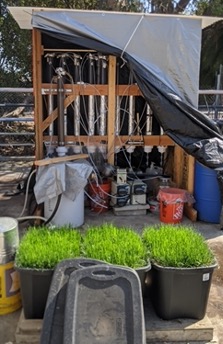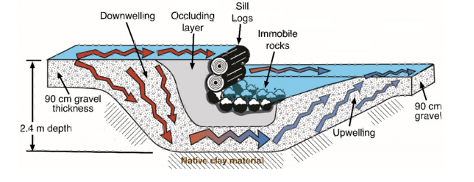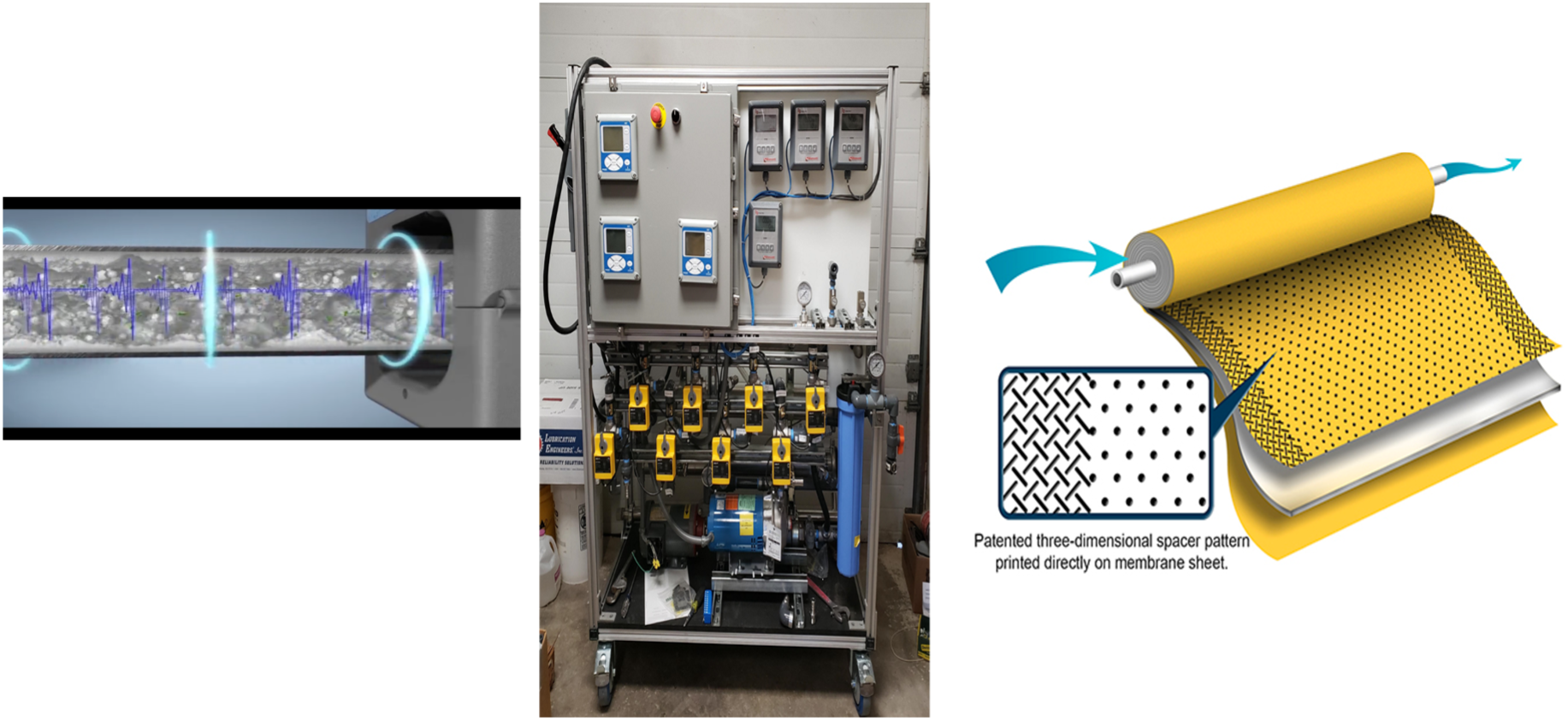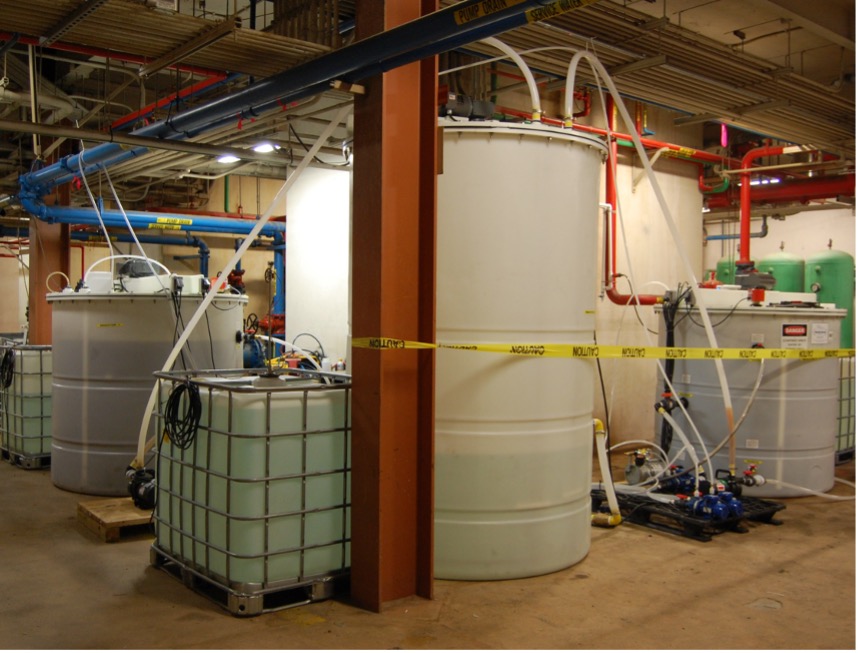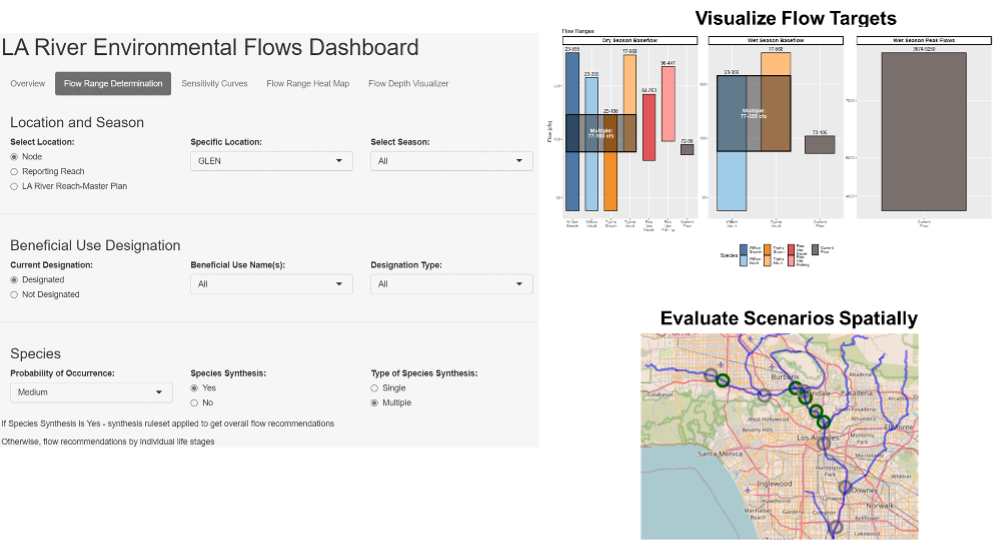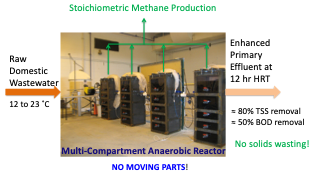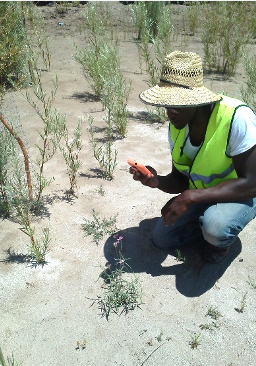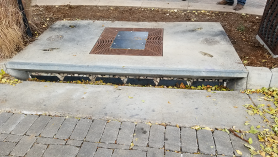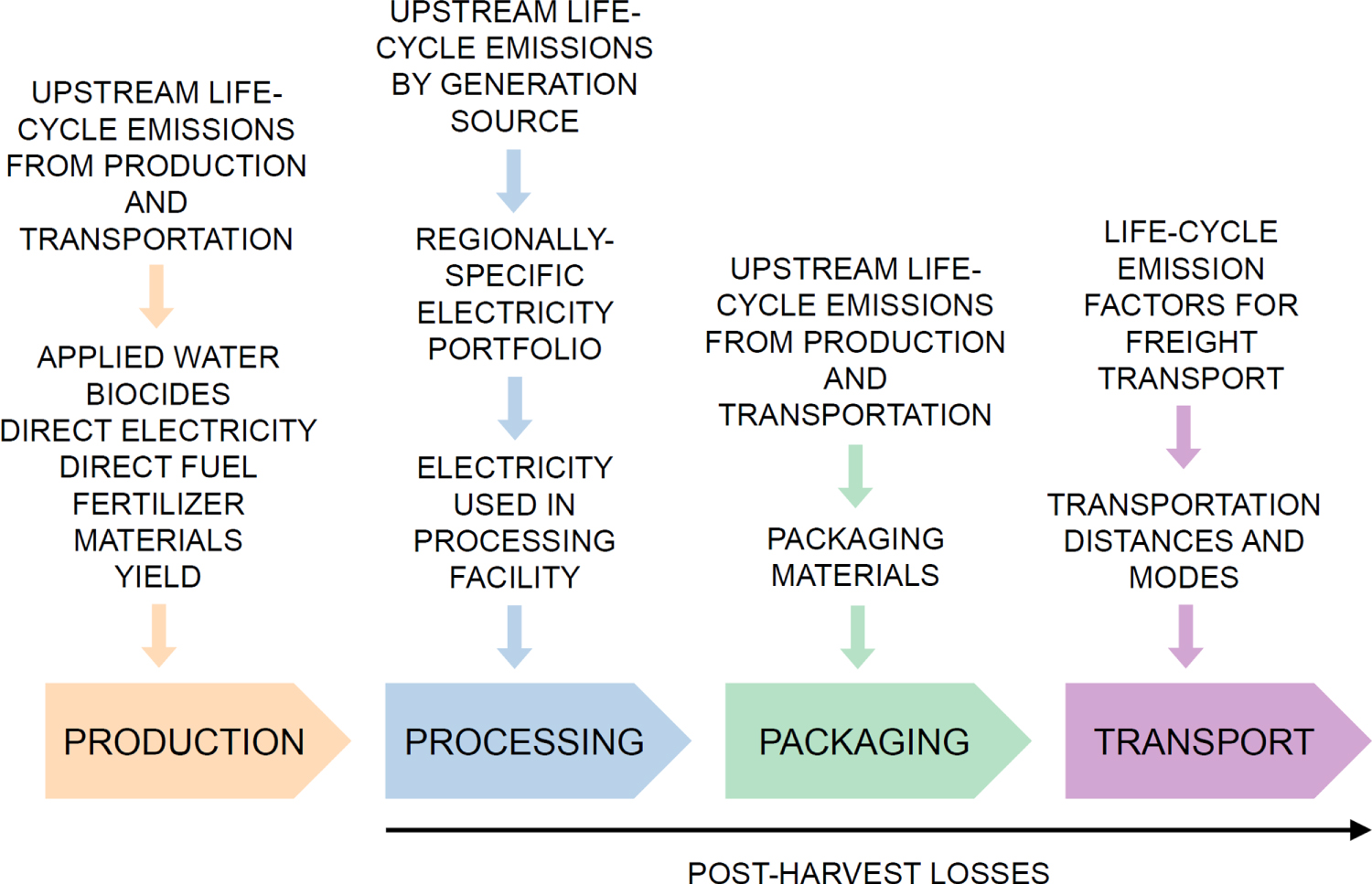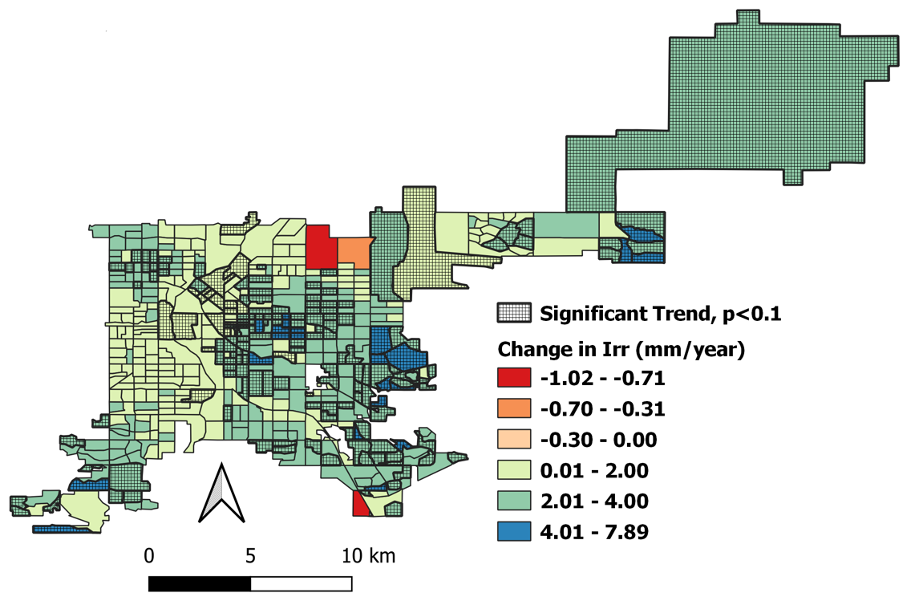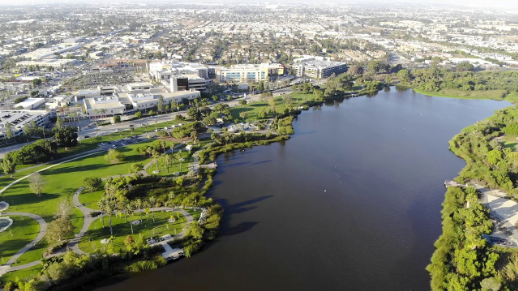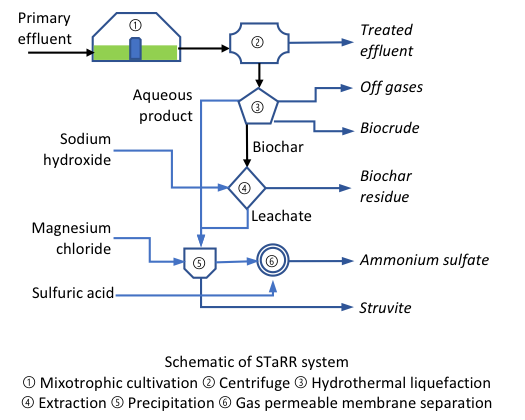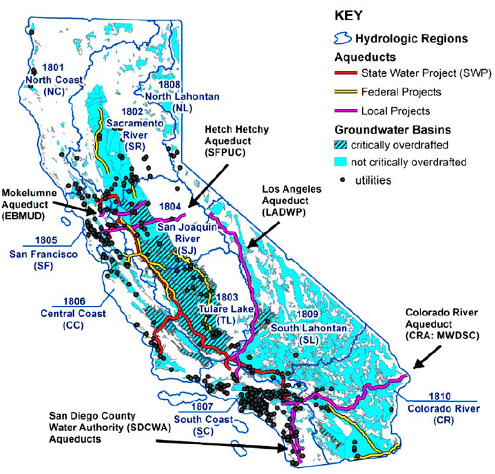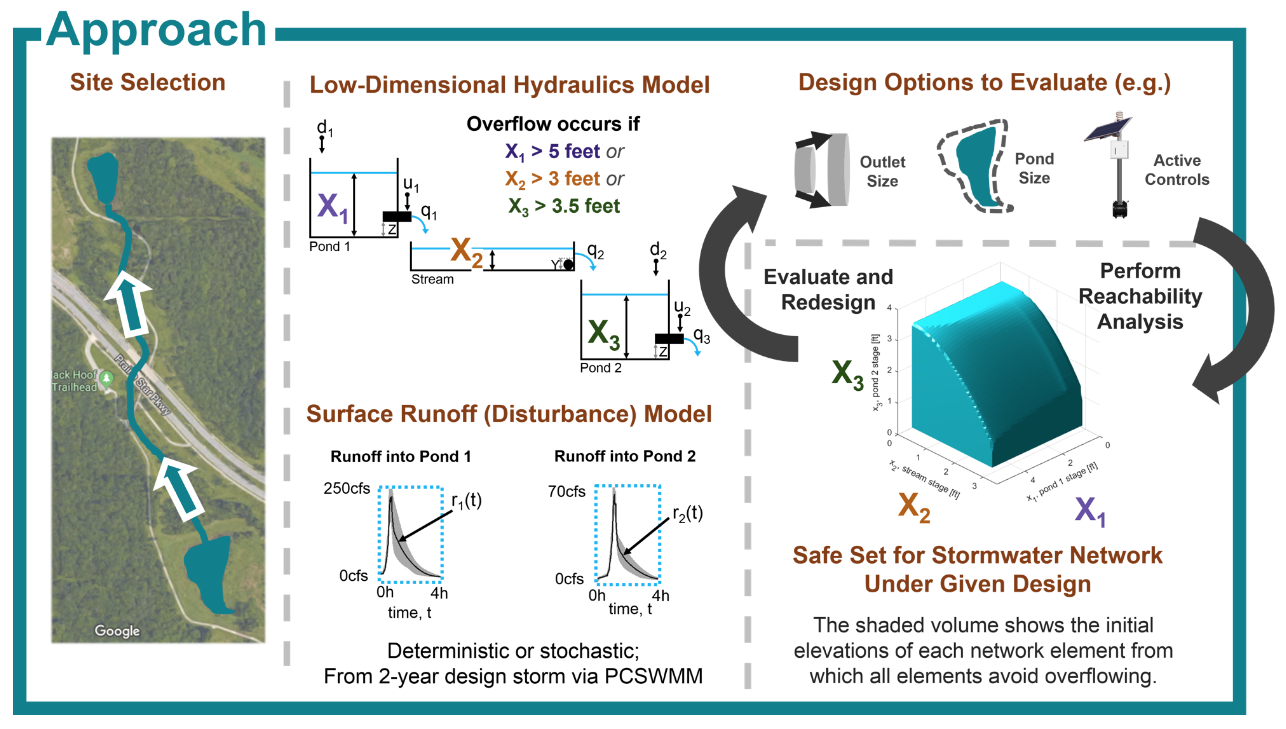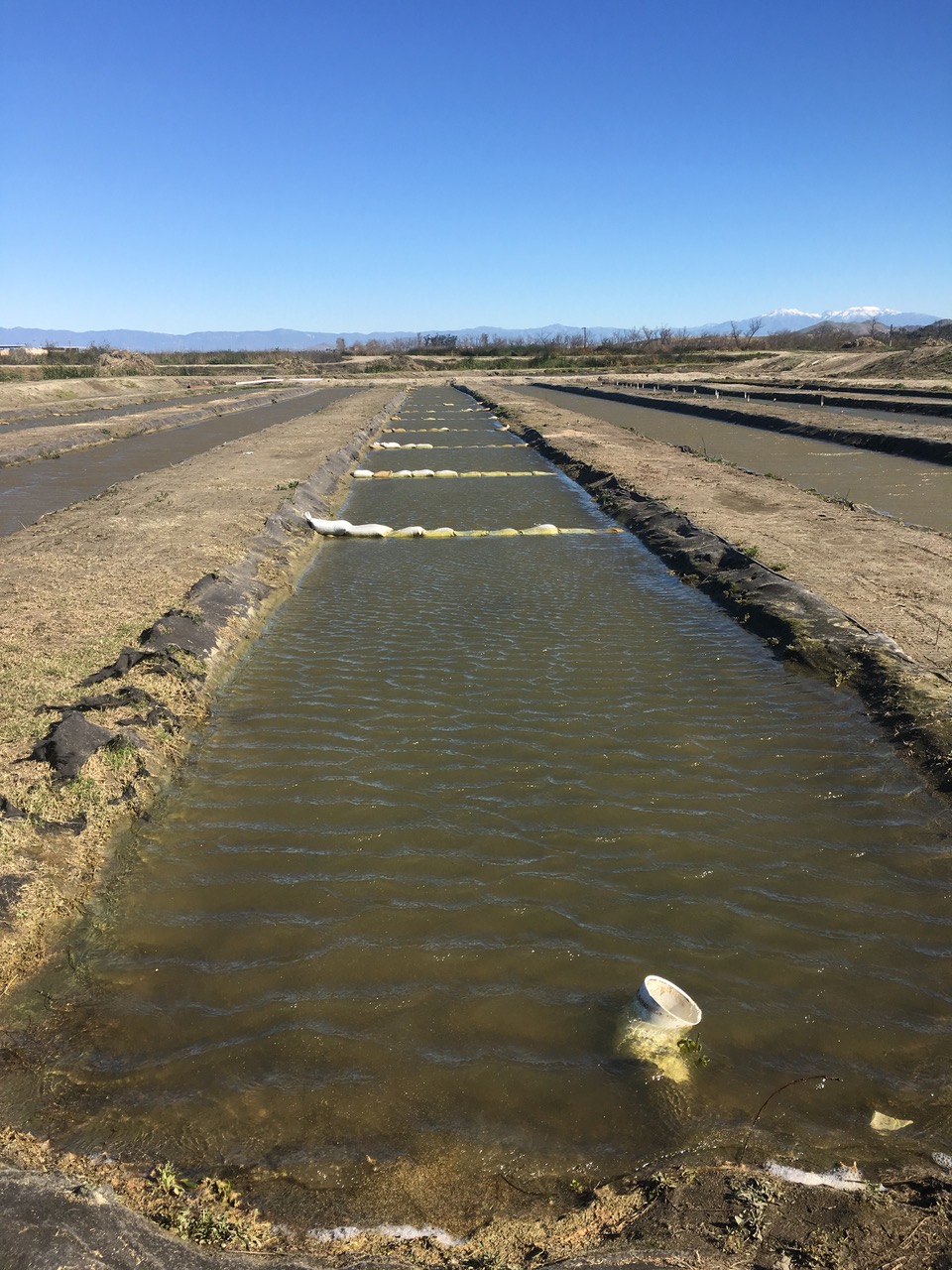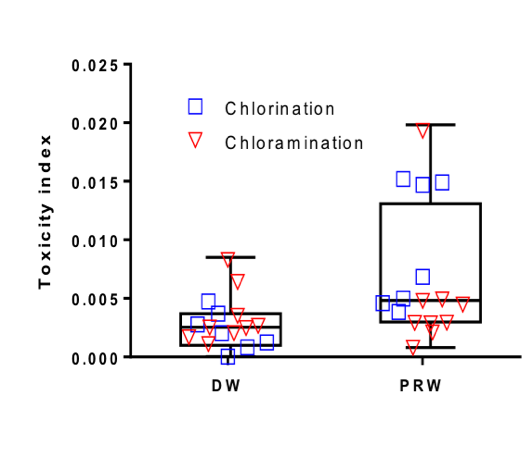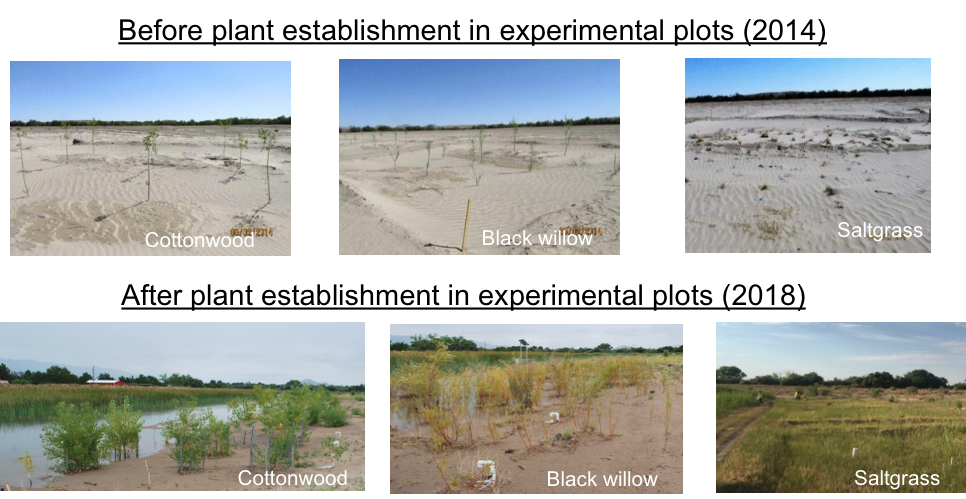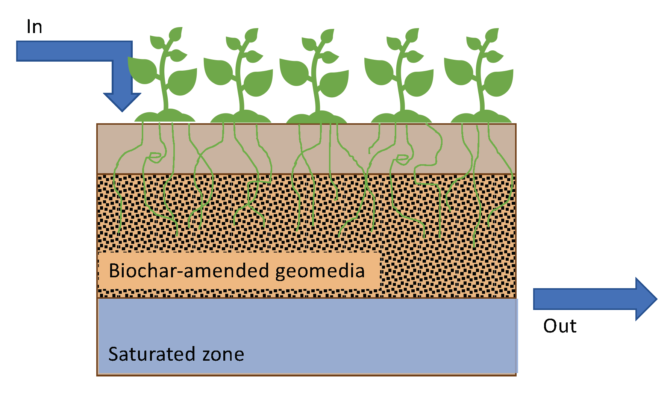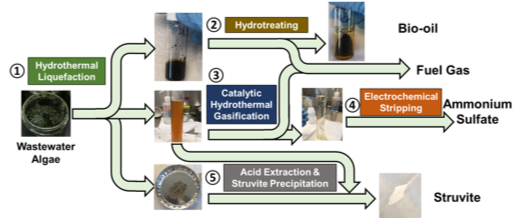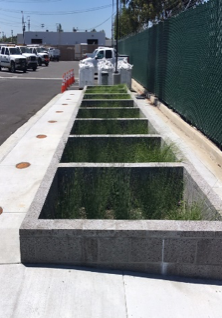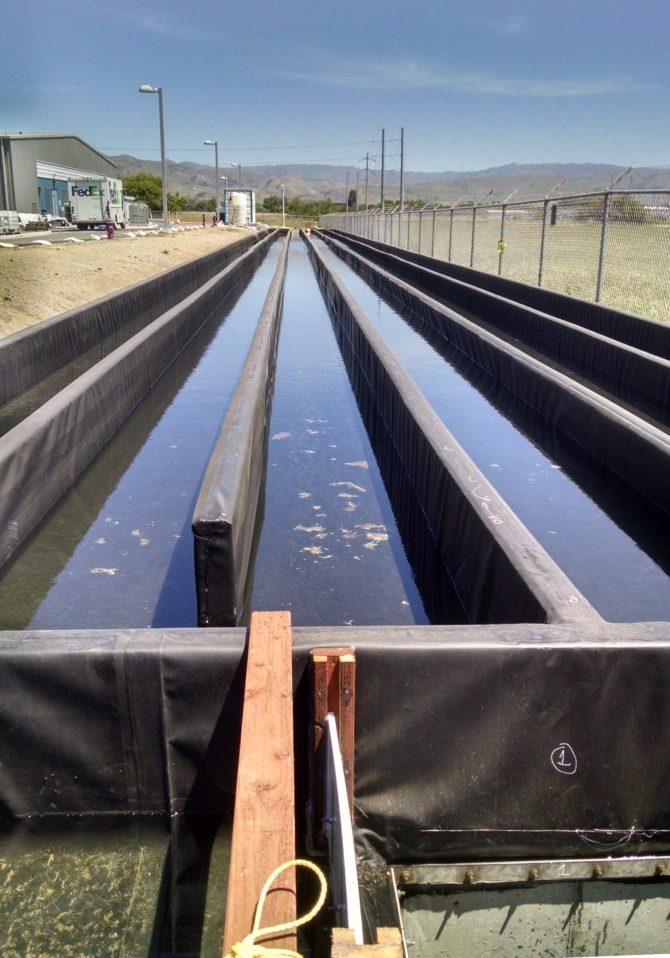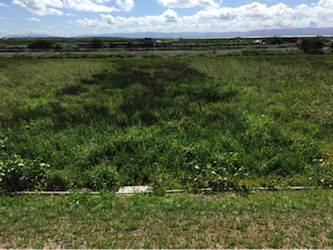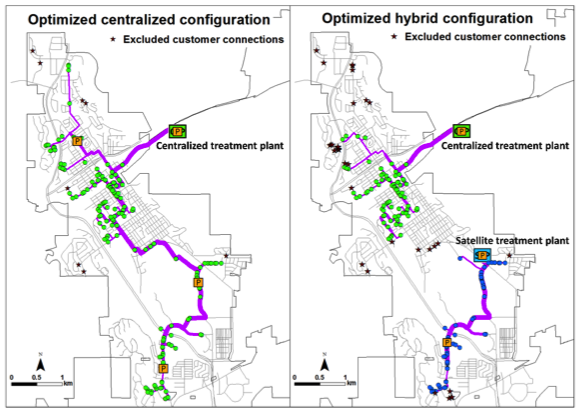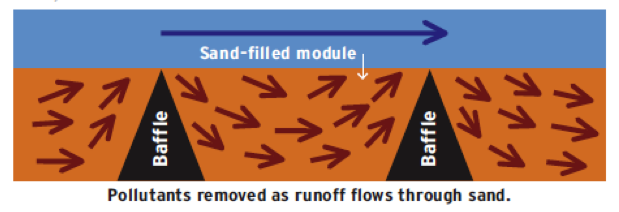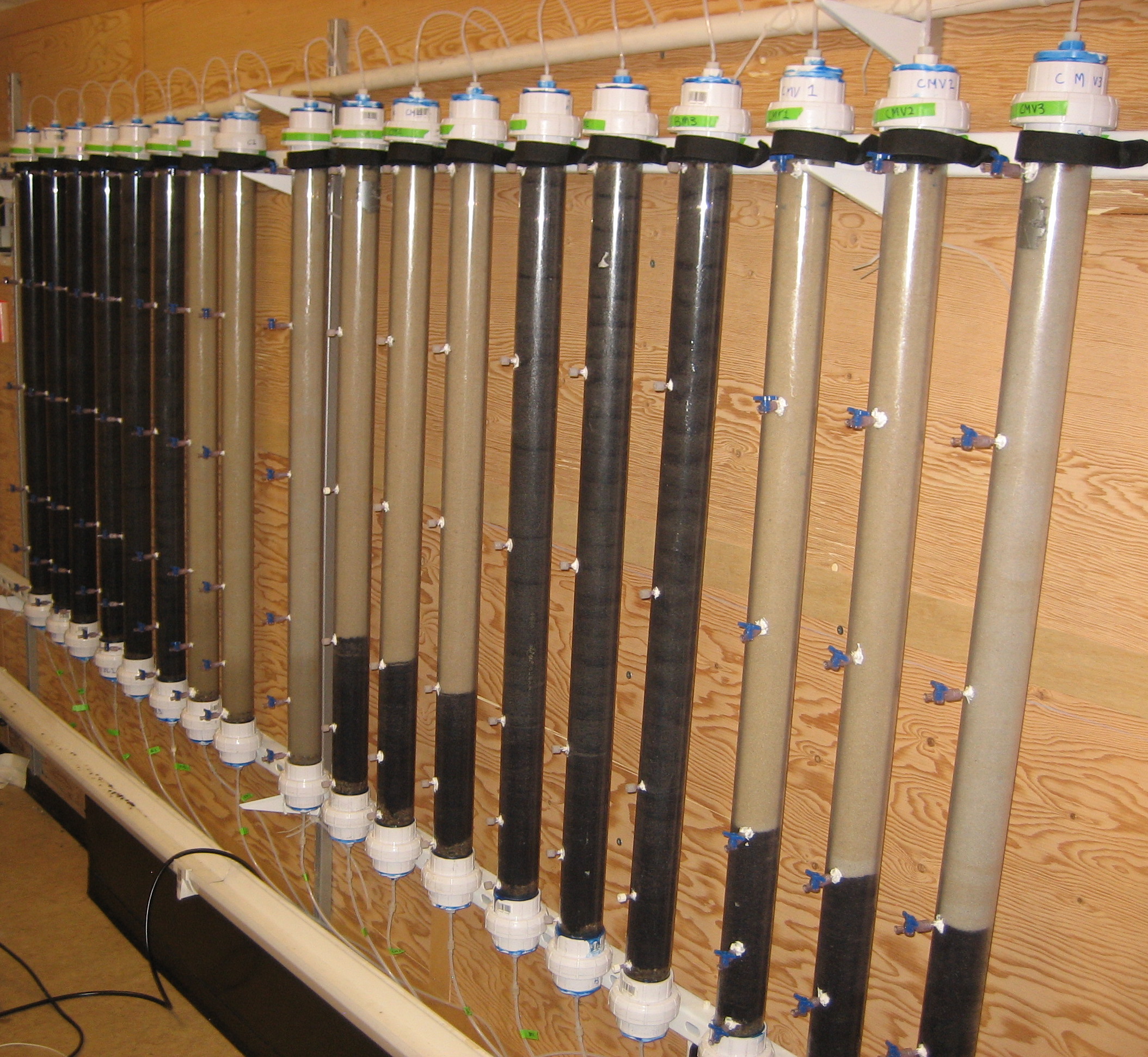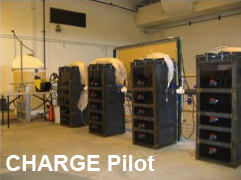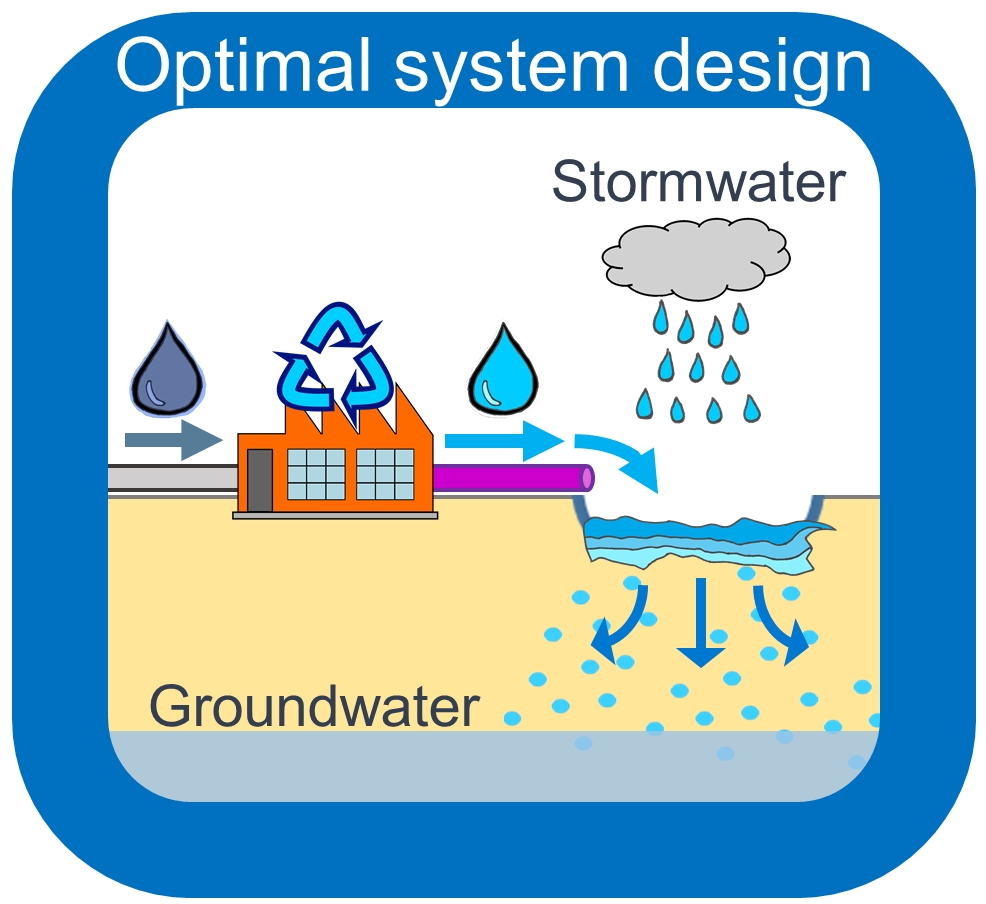Highlights
Project Spotlights
2021 Project Spotlights
Using sophisticated new analytical techniques, ReNUWIt Project E3.2 researchers can account for about 25% of the organic compounds present in recycled water. A substantial fraction of the compounds that pass through reverse osmosis membranes are low molecular weight aldehydes formed when oxidants are used in earlier stages of the treatment process.
November 2021
DPR on wheels...
Direct potable reuse (DPR) of reclaimed water is one of a few tools available to communities to increase water supplies with existing water resources and water rights, especially in times of prolonged droughts, population growth, and loss of water sources due to contamination. With support from many institutes, organizations, and industries, the E3.7 project team fabricated a system that can demonstrate DPR to small and large communities, throughout the year, and with minimal O&M.
October 2021
Energy efficient recycled wastewater for irrigation
ReNUWIt Project E2.20 aims to improve the sustainability of municipal wastewater treatment by increasing energy recovery and removing barriers to non-potable reuse from staged anaerobic fluidized membrane bioreactor (SAF-MBR) systems. This pilot study aims to demonstrate that energy-efficient anaerobic technology is both robust and advantageous by addressing dissolved methane recovery, which is one of the major barriers to reuse. Pilot scale tests have generated lessons on compliance and scale-up.
Urban stormwater runoff is a leading cause of streamwater impairment across the country. While many approaches address stormwater contamination, few have focused on in-stream stormwater treatment. To fill this gap, ReNUWIt Project N3.4 researchers are developing a new streamwater treatment technology called BEST (Biohydrochemical Enhancements for Streamwater Treatment) which is designed to treat flows in small urban streams.
Development of innovative, non-chemical scaling control methods offers significant opportunities to develop cost-effective desalination technology, enhance water recovery, improve sustainability, and build resilience against water scarcity. ReNUWIt Project E2.24 pilot-scale experiments demonstrated the effectiveness of electromagnetic field (EMF) for descaling the precipitates pre-formed in water pipes and tanks, and reducing membrane scaling during brackish water desalination.
Design and operation of a two-stage short-cut nitrogen removal process from wastewater (the Coupled Aerobic-Anoxic Nitrous Decomposition Operation [CANDO]) was optimized for recovery of nitrous oxide (N2O), a renewable energy source, by iterative bench- and pilot-scale testing as part of ReNUWIt Project E2.1.
Los Angeles is looking to enhance water supply resiliency by increasing wastewater reuse; however, the decrease in wastewater effluent will likely impact the Los Angeles River. The Associated Project U2.16 research team, with input from stakeholders in the watershed, investigated how these changes in wastewater would impact beneficial uses of the river. A management framework built on a suite of computational hydrologic, water quality, and ecology models was created to help assess tradeoffs between wastewater reuse and beneficial uses.
A coupled hybrid anaerobic reactor for generation of energy (CHARGE) has been developed as part of ReNUWIt Project E2.4. Anaerobic redirection of organics in raw wastewater can eliminate aeration energy requirements and biosolids production while producing energy rich methane. CHARGE pilot systems have achieved enhanced primary treatment and secondary treatment depending on operation conditions.
Advancing wastewater nutrient removal and recovery (NRR) from idea to implementation requires reporting practices that facilitate comparison among diverse technologies. Project U3.8 researchers comprehensively and systematically reviewed NRR technologies and developed a standardized framework for technology evaluation and comparison based on quantitative performance metrics and qualitative attributes. Researchers also identified opportunities for expanding benefits achieved by NRR technologies and for overcoming critical barriers to implementation.
ReNUWIt Project N3.8 challenge tests have shown that regenerated activated carbon and high-temperature gasification biochar are effective media for design of improved stormwater control measures for removing a suite of organic contaminants that may be found in urban runoff.
A new type of subsurface wetland system, the Horizontal Levee, has been developed to protect existing coastal levees, create upland marsh habitat and improve water quality. Promising water quality results and local enthusiasm for nature-based solutions have motivated new efforts to expand the Horizontal Levee to the full scale regionally and to new applications: the treatment of reverse osmosis concentrate.
ReNUWIt Project U3.6 seeks to better understand how regulation influences decisions about technology adoption in the wastewater sector. Researchers found that wastewater utility managers generally identified factors related to regulatory relationships and to the broader regulatory environment as barriers to innovation, and indicated that addressing these aspects of regulation would encourage innovation.
2020 Project Spotlights
Anaerobic treatment technologies can exhibit lower energy inputs compared to aerobic treatment; however, nitrogen and sulfur in anaerobic effluents can surpass secondary effluent standards, exert oxidant demand, and prevent downstream reuse of treated wastewater. Electrochemical treatments exhibit low energy demands, limited chemical inputs, and facile process controls. ReNUWIt Project E2.21 aims to electrochemically remove nitrogen and sulfur from anaerobic effluents and convert them into value-added products. In addition, the project compares the life-cycle energy, cost, and chemical inputs of electrochemical recovery to conventional removal.
Utilities in arid environments face the challenge of maintaining riparian corridors to improve water quality, enhance wildlife habitat, and conserve water through the removal of non-native and high water-consuming vegetation. A lack of quantitative understanding of these and broader benefits make it difficult to assess the amount of funding that should be invested in riparian habitat rehabilitation. ReNUWIt researchers at the Sunland Park Testbed have been assessing the survivability of native plants using various planting techniques while creating habitat for wildlife, reducing sediment runoff, stabilizing the embankment, and enhancing aesthetics.
The anammox process for removing ammonia from wastewater requires 60% less energy and reduces biomass waste and greenhouse emissions by 90% compared to conventional nutrient removal methods. Competition for nitrogen sources and depletion of organic carbon are at the basis of performance crashes in the anammox reactor. A chance malperformance event of a lab-scale anammox reactor led ReNUWIt researchers to investigate how interaction between the microbial community members effect the stability of the anammox process.
September 2020
Sustainability evaluation of ReNUWIt green infrastructure
Interest in blue-green infrastructure for raw water and stormwater treatment is growing rapidly. ReNUWIt is working with UWIN Sustainability Research Network researchers at Colorado State University to develop a practitioner-friendly matrix for evaluating the sustainability of blue-green infrastructure for stormwater and raw water treatment. The overall goal is to evaluate the life-cycle sustainability of innovative ReNUWIt technologies relative to traditional technologies.
Development of innovative ion exchange membranes with high monovalent permselectivity, antifouling properties, and high energy efficiency offers significant opportunities to develop cost-effective desalination technology, enhance water recovery, improve sustainability, and build resilience against water scarcity. ReNUWIt Project E2.5 laboratory and pilot studies have demonstrated the cost-effectiveness and energy-efficiency of selective electrodialysis to treat a variety of impaired waters.
Recognizing the tight interconnectedness of food-energy-water (FEW) systems, ReNUWIt project U1.6 has developed a broad framework for analyzing and improving the environmental impacts of growing agricultural produce and consuming food. The primary goal is to assess the environmental impacts and find opportunities and synergies in agriculture interfacing with urban areas, such as in reuse of wastewater and stormwater, nutrient recovery from wastewater, and energy recovery from food and other wastes. Several interconnected projects have been completed that get society closer to: (1) a comprehensive, life cycle-inclusive assessment of agricultural production and consumption, and (2) connected food, energy, and water systems that would realize synergies each can provide under the right circumstances.
ReNUWIt project U2.15 evaluates trends and drivers of urban irrigation to provide policy-relevant guidance to reduce outdoor water demand in water scarce cities. This project identifies outdoor water demand as a climate adaptation challenge for urban water systems and quantifies the opportunities to develop more sustainable, resilient landscapes through redevelopment and integrated land use and water planning.
ReNUWIt project N2.7 fosters innovative stormwater management practices at the watershed-scale by developing new technologies for cost-effective treatment of stormwater in engineered, media-enhanced infiltration systems. This project investigates the effectiveness of biochar, compost, and Mn-oxide coated sand for the removal of nutrients, metals, and trace organic contaminants from urban stormwater to prevent the contamination of groundwater and drinking water supplies with use of urban runoff.
April 2020
Greening the sewage treatment system
The algal-based sewage treatment and resource recovery (STaRR) system offers a greener pathway for treating sewage and recovering valuable resources from it. Pilot scale results have confirmed that the system affords several advantages over the current practice, and that it has the potential to reduce the carbon- and resource-footprint of wastewater utility services. A larger scale (2000L) demonstration of the STaRR system is currently underway at the Las Cruces Wastewater Treatment Plant.
ReNUWIt project U2.5 is using science and engineering to inform policy and public decision-making around stormwater management and beneficial use. Developing methods to enable stormwater beneficial use will help protect against water scarcity and improve water resiliency for the arid front range of Colorado.
While other “process” industries, such as manufacturing, have used real-time, data-driven process control for decades, the water and wastewater treatment industries have been slow to adopt new control strategies. This project aims to address the knowledge gaps between novel data-driven process control methods and existing monitoring and control objectives at full-scale water and wastewater treatment facilities.
The energy required to supply water changes significantly with shifting supplies and demands. Future stresses like climate change and population growth, as well as potential innovations in water treatment and management, affect predictions of embedded energy and associated greenhouse gas emissions in our water supply. Understanding trends and their drivers will support integrated resource management, assist in prioritizing investments, and target policy mechanisms to address challenges before long term impacts occur.
2019 Project Spotlights
The i-DST is a planning-level stormwater decision support tool that helps practitioners select the most appropriate combination of green, grey, and/or hybrid infrastructure. The tool is modular and composed of site-scale and sewer-shed scale hydrologic modeling, life cycle cost and life cycle assessment, and a co-benefit analysis.
Reclamation of wastewater to produce potable-quality water offers significant opportunities to minimize freshwater withdrawals, improve sustainability, and build resilience against water scarcity by investing in local water sources. This project aims to demonstrate an algal-osmosis membrane treatment system for resource recovery from municipal wastewater including potable quality water and algal biomass for bioenergy and fertilizer. The core components of the system include a mixotrophic algal process for removal of biochemical oxygen demand (BOD) and nutrients, followed by a hybrid forward osmosis (FO)-reverse osmosis (RO) system for separation of biomass from the algal effluent and production of potable-quality water.
Accurate methods to predict impervious surface connectivity are needed to improve hydrologic modeling and efficient siting of distributed stormwater technologies. ReNUWIt researchers are developing a new method for estimating impervious surface connectivity across different soil types, slopes, rainfall scenarios and landcover parameters. The outcomes of this research may be used as hydrologic model inputs and to inform more efficient distributed stormwater control siting across heterogeneous urban landscapes.
Stormwater infrastructure is required to safely manage uncertain precipitation events of varying intensity, while protecting natural ecosystems, under restricted financial budgets. The purpose of this project is to devise more realistic design-phase indicators of stormwater system performance under precipitation uncertainty, by applying and further developing a formal verification method called reachability analysis.
Direct potable reuse (DPR) treatment trains are designed to achieve high levels of pathogen removal, but little is known about how advanced treatment alters the entire water microbiome, and whether blending and introducing advanced treated water into conventional distribution systems presents any unique microbiological risks. This project aims to fill these knowledge gaps and to develop new methods for understanding and maintaining microbial water quality in DPR projects.
Concerns about the impact of climate, seasonality, fooprint and disruptive events on performance have limited broader adoption of treatment wetlands. ReNUWIt researchers are exploring nitrogen treatment and underlying mechanisms within a macrophyte-free, photosynthetic engineered wetland field-scale construct that is coupled to biologically active flow-manipulating structures. In concert, this approach has the potential to increase system reliability and resilience while decreasing overall footprint needs for optimal water treatment.
Water infrastructure planning and management requires a deep knowledge of water use across all sectors. Utilizing high-resolution water use data produced by emerging smart metering technologies, ReNUWIt researchers have examined a previously understudied subsector, nonresidential large landscape irrigation, to gain insights into customer behavior.
ReNUWIt researchers are evaluating ways to control disinfection byproduct (DBP) formation, including THMs and NDMA, in reuse systems by altering the way that disinfectants are added. Additionally, researchers are developing a new framework that industry and regulators can apply to compare the chemical quality of reuse waters and conventional drinking waters, as well as identify which chemicals likely contribute most to the chemical toxicity of the waters.
This research investigates the use of low water consuming native vegetation and geo-engineering techniques to reinvent stormwater conveyance and detention systems in urban settings. The outcomes of this research will help restructure drainage and river systems in arid urban environments to be more effective in trapping sediment and other contaminants from flood runoff to further prevent contamination of surface and groundwater, sustain native vegetation, and improve aesthetics for economic development.
Biochar amendments to conventional bioretention design can increase the removal of water soluble trace organics from stormwater that are not well removed with existing bioretention specifications. Soluble organics are of concern because they are less likely to sorb to geomedia or soil and are thus more likely to contaminate receiving waters.
Efficient techniques for both energy and nutrient recovery are needed to transform wastewater treatment plants into water resource recovery facilities. ReNUWIt researchers are developing integrated aqueous systems to convert wastewater-derived biomass into valuable products including hydrocarbon fuels, fertilizers, and chemical intermediates, thereby realizing the simultaneous treatment and valorization of wastewater.
ReNUWIt researchers have developed BIOCHARge, biochar-augmented stormwater biofilters. The biofilters contain a mixture of sand and biochar which effectively remove microbial contaminants, including fecal indicator bacteria, bacteria pathogens, and coliphage from stormwater. The pollutant removal capabilities of BIOCHARge are one of the multiple benefits of stormwater biofilters and green infrastructure.
2018 Project Spotlights
ReNUWIt researchers have partnered with the Santa Clara Valley Water District and the San Francisco Estuary Institute to develop a cost-effective approach for removing trace organic contaminants, nutrients and metals from reverse osmosis concentrate prior to its discharge. If successful, the technology will make it possible for utilities that do not have access to an ocean outfall to employ reverse osmosis in potable water reuse projects without adversely impacting aquatic ecosystems.
Anaerobic secondary treatment of wastewater has the potential to convert wastewater treatment plants from major energy consumers into renewable power plants. The Staged Anaerobic Fluidized Bed Membrane Bioreactor (SAF-MBR) is a promising system that has been deployed as a pilot at the Codiga Resource Recovery Center testbed at Stanford and is now being tested at a full-scale wastewater treatment plant operated by industry partner Silicon Valley Clean Water in Redwood City, CA. In initial testing at Stanford, the SAF-MBR system has consistently achieved >90% chemical oxygen demand (COD) removal.
ReNUWIt researchers at UC-Berkeley are working to identify the engineering design characteristics and regulatory opportunities and barriers relevant to the potential for widespread implementation of BEST (biohydrochemical enhancements for streamwater treatment) facilities. This research is being completed in collaboration with ongoing technical research into BEST systems by ReNUWIt researchers at Colorado School of Mines. Engineering design opportunities include the potential for aesthetic and recreational co-benefits, which bring with them the potential for co-funding of infrastructure development from a range of non-traditional sources. Regulatory opportunities and barriers include understanding what performance data and technical characteristics are desired to gain recognition of a new technology by relevant regulatory and non-regulatory “gatekeepers” of new stormwater technologies.
The Living Levee is an innovative, multi-benefit system used to combat the effects of sea-level rise in coastal urban areas. It is a sloped, subsurface constructed wetland designed to buttress existing storm control levees to protect them from storm surges, improve wetland habitat, and provide additional treatment to municipal wastewater effluent. Pilot scale results suggest that nutrients and recalcitrant trace organic contaminants can be removed effectively in this type of system if hydrology is appropriately considered during design.
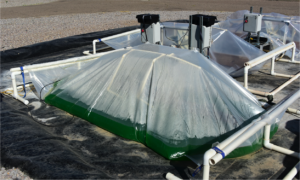
A ReNUWIt research team has demonstrated a 700-L pilot scale version of the POWER (Photosynthetically Oxygenated Waste-to-Energy Recovery) system at the Las Cruces Wastewater Treatment Plant in Las Cruces, NM. Fed-batch operations of this algae-based pilot scale system achieved discharge standards for BOD, N, and P in a single step within 3 days. Comparison of the bacterial water quality of the algal effluent with the secondary effluent, confirmed superior performance of the POWER system.
A ReNUWIT research team has developed a software toolkit, IRIPT (Integrated Urban Reclaimed Water Infrastructure Planning Toolkit), that facilitates planning and design of reclaimed water infrastructure for both centralized and hybrid configurations that incorporate satellite treatment plants (STPs). The toolkit gives decision-makers the ability to analyze many configurations across a wide range of scales, facilitating more transparent decision-making, engaging stakeholders, and increasing chances of socially acceptable and equitable solutions that satisfy many needs simultaneously.
Strormwater quality management approaches are typically focused on improving water quality before or within a storm drain system. Researchers are developing BEST (biohydrochemical enhancements for streamwater treatment) to provide an in-stream treatment option.
While the accepted industry standard potable reuse treatment train reliably produces high-quality water, there are a number of factors, such as energy use and concentrate management, that have constrained widespread implementation of these systems. ReNUWIt researchers are evaluating alternative potable reuse treatment trains with the goal of addressing some of these factors.
The tradeoffs between system size and technology performance are an important consideration for utilities evaluating decentralized infrastructure. ReNUWIt’s life-cycle assessment (LCA) tool with location specific techno-economic and environmental models can assist decision makers when planning for implementation of decentralized water reuse and nitrogen recovery.
Long approached from a flood control and pollution management perspective, urban stormwater runoff is now also seen as a potential water supply source for recharging groundwater aquifers. New geomedia-based stormwater treatment systems being pilot tested by ReNUWIt researchers in Los Angeles, California have the potential to provide a reliable and cost-effective treatment solution that could turn this vision into a reality.
2017 Project Spotlights
Achieving energy positive wastewater treatment is hindered by a heavy reliance on energy intensive aerobic processes. The Coupled Hybrid Anaerobic Process for Generation of Energy (CHARGE) eliminates the energy requirement for organic matter oxidation, reduces the amount of waste biomass production to 1% of the influent organic carbon while concurrently generating methane.


